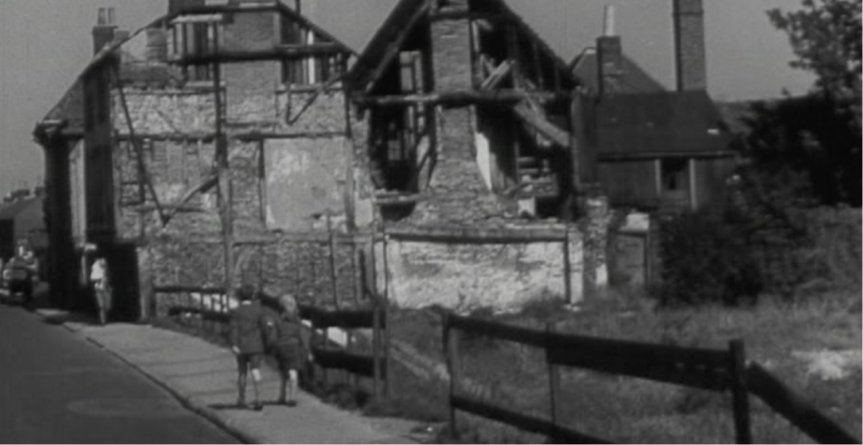A Walk Through Time activity sheets
Click here to find a programme of curriculum linked classroom activities and resources to support the ‘A walk through time’ resource.
Download activity sheetsOn 1 June 1942 Canterbury was severely bombed in what became known as the ‘Baedeker Raids’. The Cathedral was a key target of the raid. When the bombing began four men who had been designated as ‘fire watchers’ rushed to the roof of the Cathedral. Their job was spot and put out incendiary bombs before they could cause a fire. Thanks to their bravery the Cathedral survived the raid largely unscathed despite sixteen bombs falling nearby and the damage to the Deanery and Library.
On the 28 March 1942 the British Royal Air Force had attacked the German port city of Lübeck causing huge damage. In response Hitler planned a bombing campaign which focused on cultural sites in cities like Canterbury, Exeter and York. Two days before Canterbury was bombed much of the medieval city of Cologne was destroyed by British bombers. The attack on Canterbury was reported in the German media as revenge for Cologne. The bombing campaign was called the ‘Baedeker Raids’ because the Baedeker guide-book – a popular German tourist guide – was allegedly used to decide which English cities to bomb.
We could hear the roar of the planes overhead and when we looked up we saw flares shoot up into the sky from them and explosives and incendiaries began to fall. They seemed to be coming down like hailstones.Tom Hoare, lead fire watcher
43 people lost their lives and 100 were wounded in the attack on Canterbury. 800 buildings in the city were destroyed. After the raid many people from Canterbury gathered at the Cathedral to demonstrate solidarity against this attack on British morale.

This memorial was installed in the Cathedral in 2004 following a campaign by the local newspaper. It is one of several memorials to the events of 1942 in the city
The windows in this part of the Cathedral were destroyed in World War Two. New windows were designed by the Hungarian artist Edwin Bossanyi and installed in 1960. Bossanyi had fled Hungary after Hitler’s rise to power. The larger, lower windows explore the themes of Salvation and Peace.
At the beginning of the war the medieval stained glass windows were taken out and stored in boxes in the Corona towers and St Gabriel’s Chapel until the war was over. However, many of the later Victorian windows were not removed and were destroyed in the bombings.
Click here to find a programme of curriculum linked classroom activities and resources to support the ‘A walk through time’ resource.
Download activity sheets© Dean and Chapter of Canterbury Cathedral
